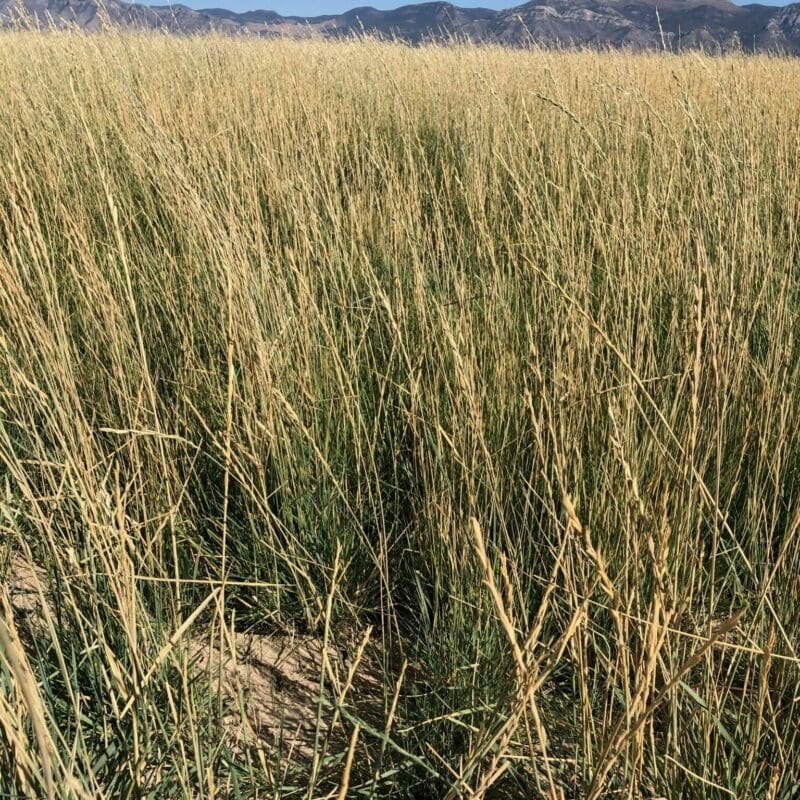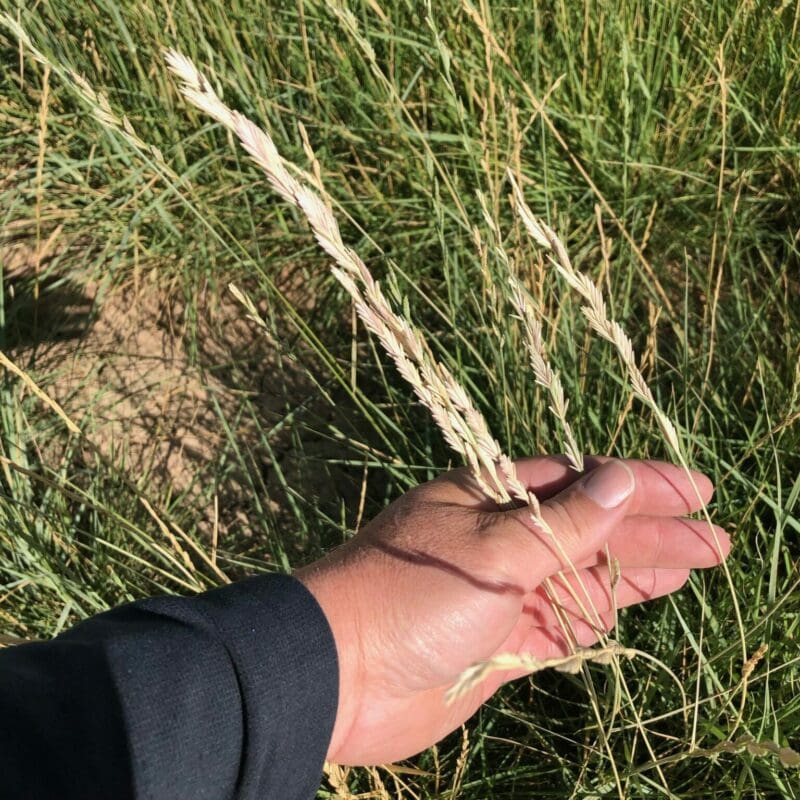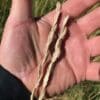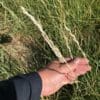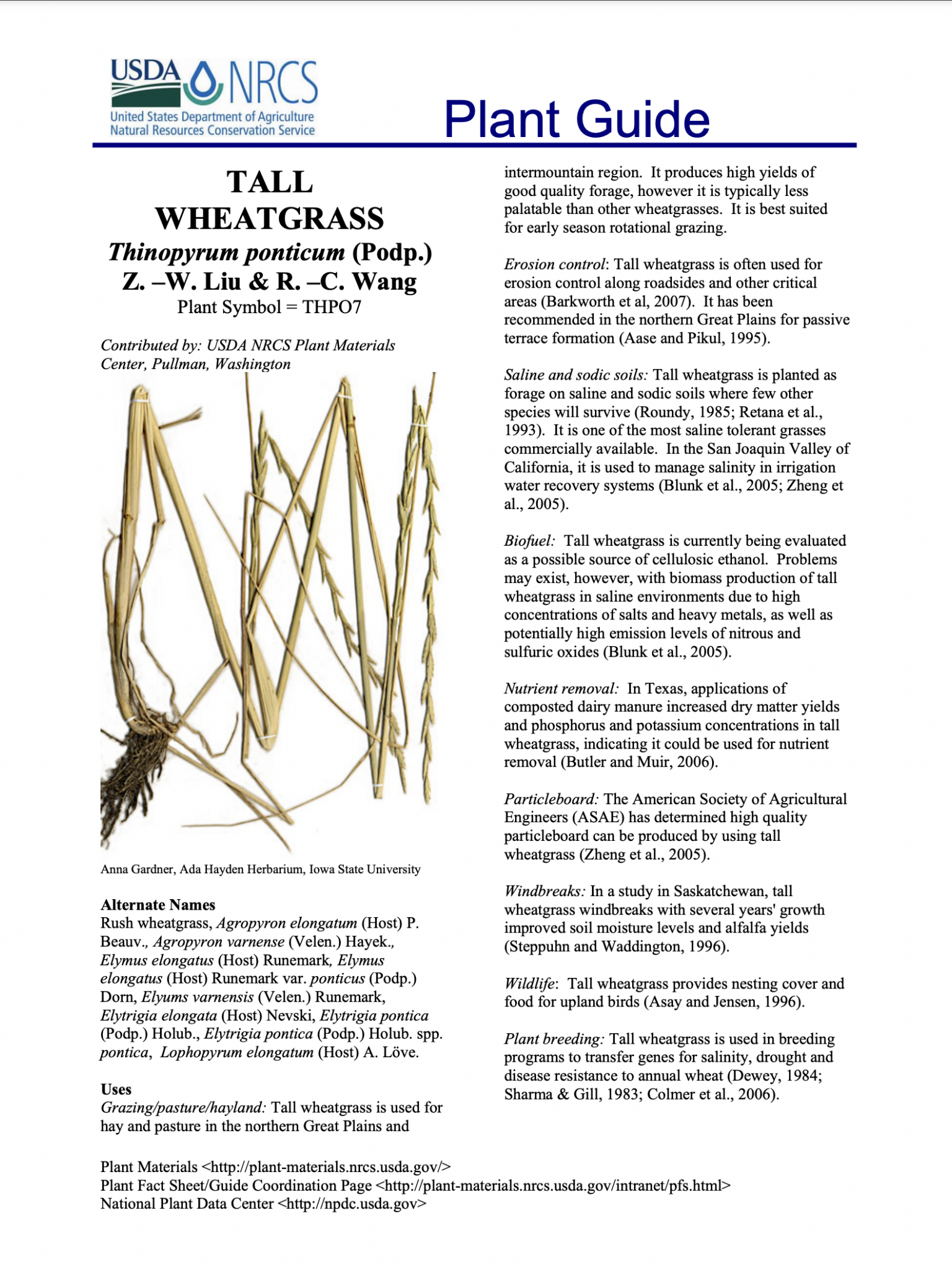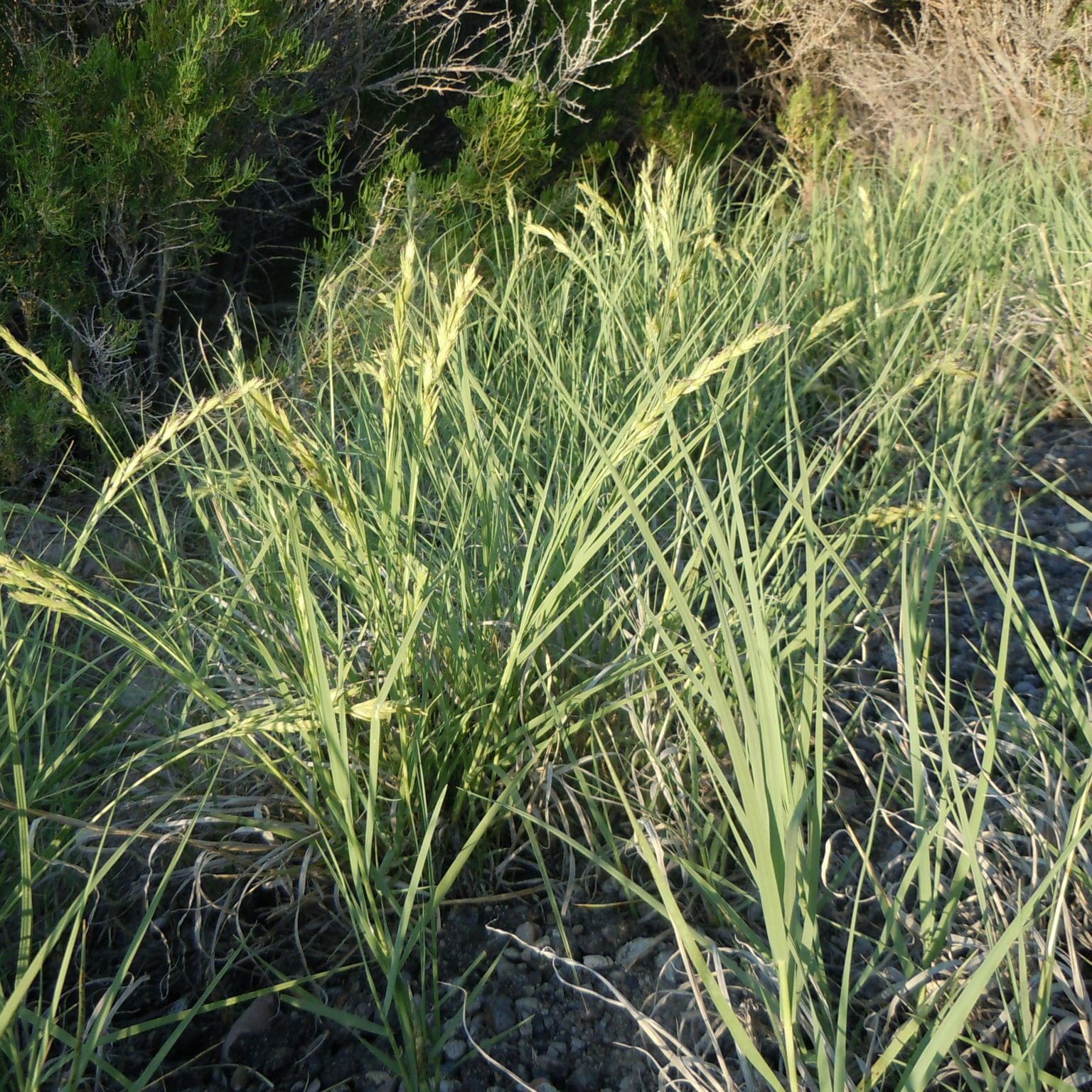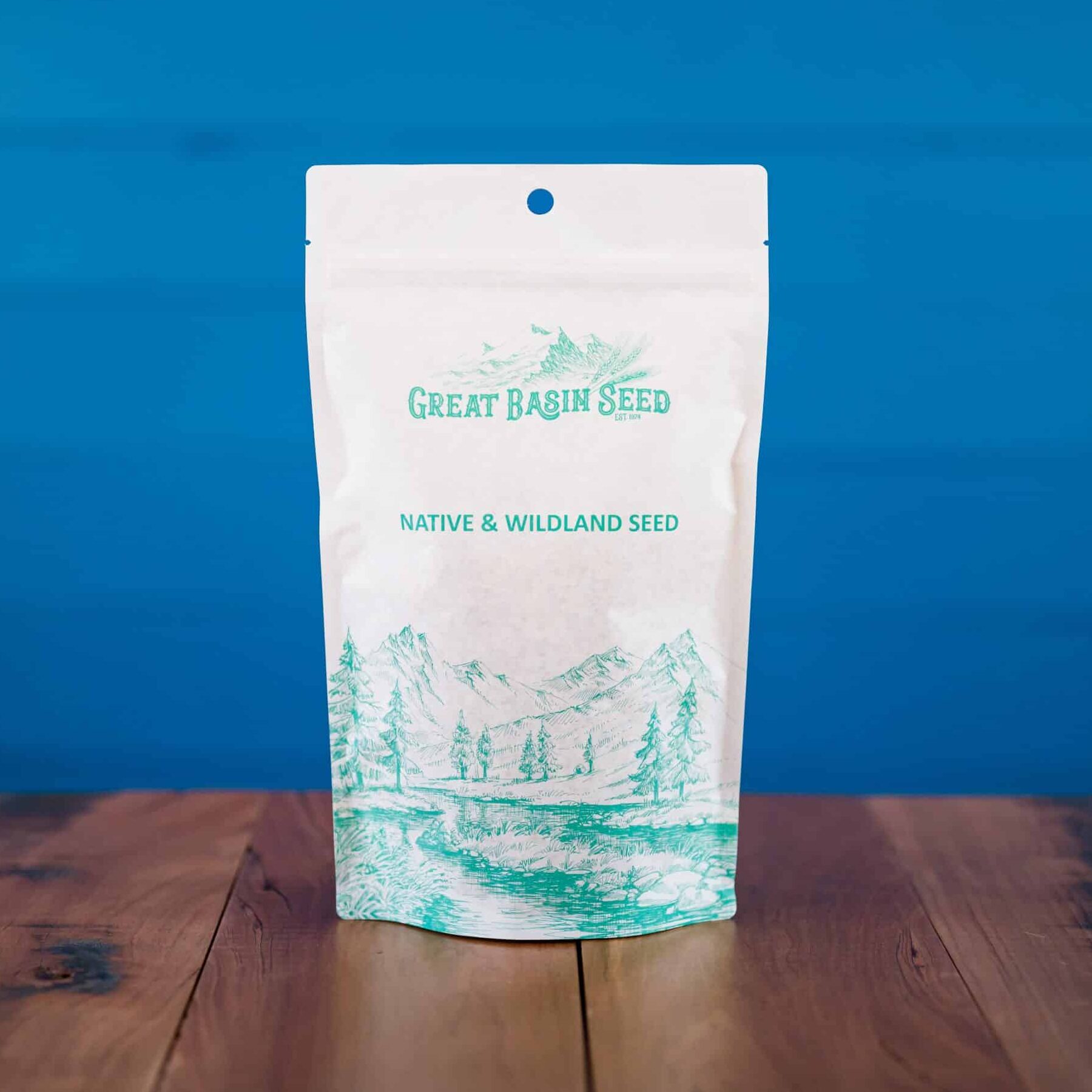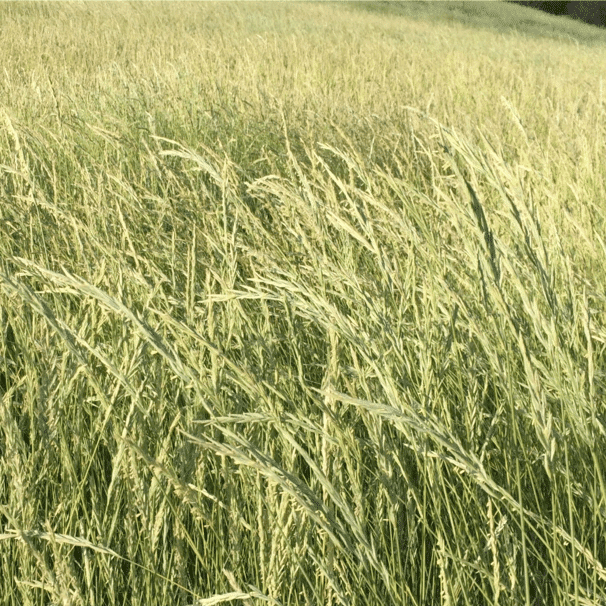Tall Wheatgrass (Agropyron elongatum, thinopyrum ponticum) has had several name revisions and is known scientifically as Agropyron elongatum and Elytrigia elongata. Tall wheatgrass is a cool-season perennial bunchgrass with a fibrous root system. It can grow as tall as 10 feet in the right conditions, but averages 3-4 feet. Originally from Turkey, Asia Minor and Russia. It was introduced to the U.S. from Turkey in 1909 and is now found throughout all western states of the U.S. and most Canadian provinces. It is adapted to a wide range of soil types and climates but is is often recommended for 12 – 14 inch and higher precipitation zones or sites with high water tables at 4,300 to 6,000 feet elevation zones. It is an excellent alkali tolerant pasture grass. It is less drought tolerant than crested wheatgrass, however it is adapted to sagebrush, mountain brush and juniper sites. The presence of Basin wildrye is a good indicator of where tall wheatgrass will be successful.
Tall wheatgrass is well adapted to saline-alkaline soils where few other species will survive. It produces high yields and is unsurpassed for those conditions. It can tolerate up to 1% soluble soil salts and persists in soils with conductivity up to electrical conductivity (EC) of 26 mmhos/cm. In the San Joaquin Valley of California, it is used to manage salinity in irrigation water recovery systems. It is well adapted to wet, alkaline soils such as greasewood and saltgrass sites where the water table is from a few inches to several feet below ground surface. It is one of the most saline tolerant grasses commercially available.
This species is used for hay and pasture in the northern Great Plains and intermountain region. It is coarse and late to mature and less palatable than other wheatgrass species, but should not be eliminated as a viable, productive choice. It produces high yields of good quality forage. It is best suited for early season rotational grazing. It is often used for erosion control along roadsides and other critical areas. Because of its late maturing characteristic, tall wheatgrass provides a long grazing period. It has been evaluated in several western states for its potential to extend the grazing season.
Tall wheatgrass should be planted with a drill into a firm, weed-free seed bed. Recommended seeding rates are 10 pounds Pure Live Seed (PLS) per acre on non-saline soils and 15 pounds PLS per acre on saline soils. It is usually seeded in pure stands or in mixtures with grasses also having moderate palatability. Under dryland conditions, heavy to medium textured soils should be seeded in the very early spring, and medium to light textured soils should be seeded in the late fall. Irrigated land should be seeded in spring or late summer. Late summer (August – September) seedings are not recommended unless irrigation is available.
Tall wheatgrass has excellent seedling vigor but is slow to establish. To ensure plants become well established, haying and grazing should be deferred for at least two growing seasons on dryland one growing season on irrigated land. Management Tall wheatgrass responds well to irrigation and fertilization. Apply nitrogen in fall or early spring at a rate based on soil test results and fertilizer guide recommendations. To maintain stands, 6 inches of stubble should be left at the end of the growing season. Grazing the following season should be delayed until there is at least 8 inches of new growth. Tall wheatgrass is most palatable during the early spring months and should be managed during this time. If the grass is not managed, old coarse growth may inhibit grazing the following year. Tall wheatgrass must be grazed heavily to maintain plants in the vegetative state. However it does not tolerate continuous close grazing and a rest period is required between grazing events.
Tall wheatgrass is long-lived and spreads slowly. It is not considered a “weedy” or invasive species, but can spread into adjoining vegetative communities under favorable climatic and environmental conditions. Research indicates that most seedings do not spread from original plantings. It is known to coexist with native taxa. On sites where it is best adapted, it can maintain dominance and exist as monoculture. There is no documentation that it crosses with native species.
Synonyms: Agropyron elongatum, thinopyrum ponticum
Related species include Hercules Tall Wheatgrass and AC Saltlander Green Wheatgrass
***Click on the “Quick Plant Facts” tab above for more information.
Tall Wheatgrass NRCS Plant Guide
Tall Wheatgrass NRCS Plant Guide
PDF version of NRCS Plant Guide & Fact Sheet
Prepared By: Pamela Scheinost, USDA NRCS Plant Materials Center, Pullman, Washington
Derek Tilley, USDA NRCS Plant Materials Center,
Aberdeen, Idaho
Dan Ogle, USDA NRCS, Boise, Idaho
Mark Stannard, USDA NRCS Plant Materials Center, Pullman, Washington
Species Coordinator: Pamela Scheinost, USDA NRCS Plant Materials Center, Pullman, Washington
Helpful Links
Additional information about this product can be found on the academic websites linked below.
Synonyms
Many plants have more than one common and scientific name. We've listed a few of them below.
- Tall Wheatgrass
- Thinopyrum ponticum
- Rush wheatgrass
Who is Great Basin Seed?
Great Basin Seed is a seed company that specializes in seed sales and consultation for home, ranch, farm, range and reclamation. We have been a leader in the seed industry since 1974.
Our History
We've been in the seed business since 1974.
What We Offer
We offer seed for home, farm, ranch, range and reclamation projects.
Meet the Gang
We have the best employees in the world! We are proud of the work they do, and trust them to serve you!
Right: Company founder Lloyd and his wife Paula Stevens in a wildflower seed production field circa 1977
Quick Plant Facts
| Common Name: | Tall Wheatgrass |
|---|---|
| Scientific Name: | |
| Old Scientific Name: | |
| Seeds per Pound: | |
| Growth Height: | |
| Plant Type: | |
| Origin: | |
| Lifespan: | |
| Available Varieties: | |
| Min. Precipitation: | |
| Root Form: | |
| Planting Rate: | |
| Best Time to Sow: | |
| Max Sowing Depth: | |
| Growth Season: | |
| Sun & Shade Tolerance: | Full Sun, Shade Intolerant |
| Elevation of Occurance: | |
| pH Tolerance: |
